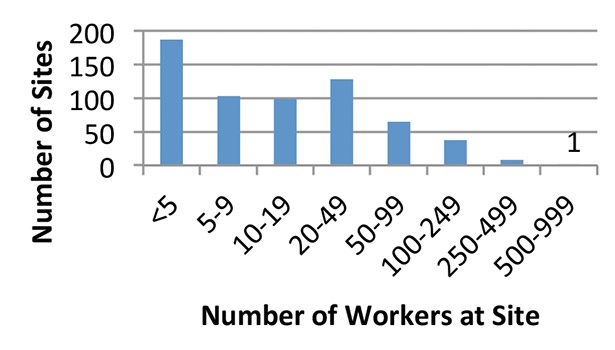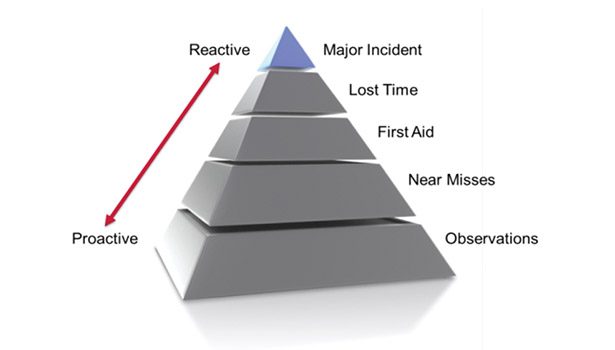Making Safety Stick Can Save More than Millions for Adhesives and Sealants Manufacturers
How much are workers' injuries really costing your business?










The actual costs of workers’ injuries go beyond the obvious (e.g., hiring a temporary employee or covering workers’ compensation claims) and include indirect costs such as lost productivity and bottom-line impact. A lot of data is available to help adhesives and sealants manufacturers determine the actual costs of their workers’ injuries.
By the Numbers
In 2013, the adhesives and sealants manufacturing industry—as defined by the North American Industry Classification System—included 629 establishments primarily engaged in manufacturing adhesives, glues, and caulking compounds. Employment was just under 20,000, with an average annual wage of $73,052. The average for all private sector U.S. workers that year was $49,200.
Worker populations for companies in this industry tend to be relatively small—averaging around 31 employees per site. Many are very small—facilities with fewer than five workers (187) represented the largest number of sites, while only one employed more than 500 (see Figure 1).
The adhesives and sealants industry posted a total recordable injury rate of 3.5 and a Days Away, Restrictions and Transfers (DART) rate of 2.2 in 2012. This means that the industry had 3.5 recordable workplace injuries per 100 workers in 2013, with 2.2 of those resulting in days away from work, restrictions or transfers. This puts adhesives and sealants at just a bit worse than the private sector averages for all workers, which are 3.4 and 1.8, respectively. In addition, the industry reported no fatal injuries that year. We could call that a pretty good year—no fatalities and “average” safety. However, the fact is that “average” safety is not very good—and definitely not inexpensive.
At just under $70,000 each for their injuries with days away (lost time), adhesives and sealants manufacturers lost $17.4 million and at least 4,810 work days (likely twice that) to injuries in 2012. Median time off the job per injury was 16 days, with 31% of employees out for 31 days or more. Both of these figures are well above U.S. averages, meaning that lost-time injuries in this sector result in more time off the job than average.
The most common injuries with days away from work for adhesives and sealants manufacturers in 2012, by far, were back and multiple body part strains and sprains from overexertion while handling containers (see Figure 2). The most frequently injured worker was a 25-34-year-old black or Hispanic male with more than five years on the job. He was typically injured early in the work shift and twice as often on Thursday as any other day of the week.
Economic Impact
To illustrate the true economic burden of these injuries, let’s assume the industry operates at a 5% profit—every dollar spent on injuries requires $20 in additional sales to cover it. That means that to recover the $17.4 million lost on injuries in 2012, adhesives and sealants manufacturers needed $348.5 million in additional sales. That’s a lot of tubes of caulk.
Putting this on a very local level, if your adhesives and sealants facility has only one lost-time injury, it’s not just a generic $70,000 hit to the company or someone else’s department. At the next sales meeting, you get to break the news that someone needs to generate an extra $1.4 million in revenue for the year to cover it.
Drilling Down in the OSHA Data
Are these injuries getting any attention from the Occupational Safety and Health Administration (OSHA)? Of the 30 OSHA inspections that adhesives and sealants manufacturing received in 2013, more than half (16) were from employee complaints, accident investigations or referrals. From those, federal OSHA issued 42 citations and collected $57,233 in penalties, led by hazard communication, flammable and combustible liquids, respiratory protection, and process safety management of highly hazardous chemicals. Penalties averaged $1,363 vs. the U.S. average of $1,544 for all private sector industries.
Closer inspection of the OSHA data reveals two interesting trends: smaller facilities with 20-49 workers received an average of 10.5 citations per federal OSHA inspection in 2013, while facilities with 100 or more workers averaged fewer than two. Is this a function of smaller facilities having fewer safety and health resources or because smaller facilities are cutting corners? We can’t tell from these data. However, assessed penalties were exactly the opposite: smaller facilities averaged only $693 per citation, while the largest sites with more than 250 workers averaged $3,150. It was not that small operators were somehow able to negotiate lower settlements. It appears that the larger sites tended to have issues with process safety management, which generally results in relatively large fines due to the implied high hazard and numbers of personnel exposed to the hazards.
Saving Money Makes Sense
Thousands of work days and $17.4 million lost to injuries (and the nearly $349 million in additional sales needed to cover it) are not going away on their own. This tendency to eat the losses is how we continue financing risk instead of managing it. Instead, we need to learn how to stop hurting our workers.
The sustainable solution is building a culture of safety. Real safety culture is a lifestyle change for the organization. It must start with an absolute commitment to safety, followed by tracking data to drive measurable improvements based on solid information. It doesn’t happen by writing a memo, firing “unhappy people” or continuing the proverbial floggings until morale improves. Start with measuring what matters. Here are some recommendations for adhesives and sealants manufacturers to get started:
• Conduct job hazard analysis to understand work activities that cause injuries.
• Measure and track everything you can through a formal incident management system (IMS) that promotes early reporting and intervention. Electronic and mobile systems are preferred.
• Be proactive and use the IMS to capture and investigate observations and near misses
with the same resolve as if they were injuries. These leading indicators are warning signs and represent your best chance to improve the process and prevent injuries and illnesses.
• Listen to your workforce. “Top-down” approaches where only managers observe and report do not work. Every employee is a source of information, and no manager or supervisor can possibly be in a better position to observe and report what is happening on the job better than the employee doing the job.
• No retaliation for reporting—especially for things you do not like hearing.
• Commit to safety. Ask everyone on the team to step up and help improve workplace safety, and make sure that the process is credible, transparent, and positive.
The adhesives and sealants industry may not be the most dangerous environment in which to work, but it has significant potential to improve. Establishing a culture of safety across the industry can reduce risk, save money and—most importantly—prevent injuries, helping us all to succeed.
For additional information, visit www.ulworkplace.com.
Looking for a reprint of this article?
From high-res PDFs to custom plaques, order your copy today!












